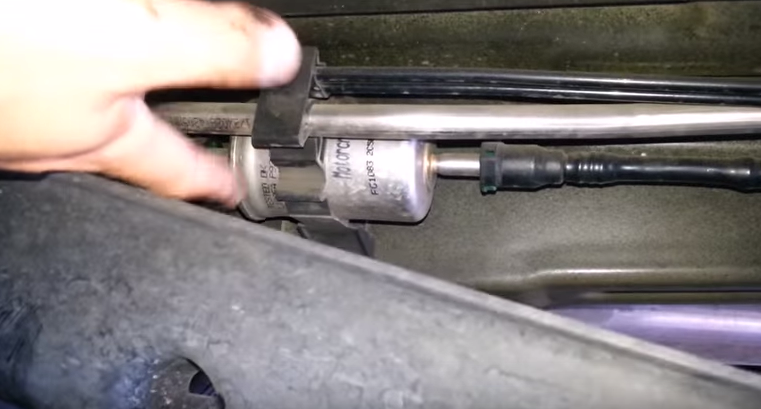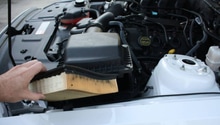Ford Mustang V6 2005-2014: Why is My Car Losing Power?
A Mustang without power is like beer without alcohol - inexcusable. Let's get under the hood and figure out what's going on.
This article applies to the Ford Mustang V6 (2005-2014).
Your V6 Mustang could be losing power for a number of reasons. The key is to narrow down the possibilities one at a time. Patience is a virtue when troubleshooting these issue, especially when the problem is intermittent. This article will guide you though the process.

Materials Needed
- Screwdriver
- Assorted wrenches and socket set
Step 1 – Take a look at your air filter
For any engine to run optimally, it needs just the right mixture of air, fuel and spark. We need to check all of them to see what might be missing. The easiest first step is to check the air filter. Not enough air to the engine could definitely cause power problems.
This is what a clean filter should look like:

Step 2 – How about the fuel filter?
The filter can get in the way of your air and your fuel flow. A blocked fuel filter can cut your power dramatically, and even keep the car from starting. Getting to the fuel filter requires getting under the car, removing the protective shield and disconnecting it from the fuel lines. This is significantly more challenging than the air filter, but it can be done.
Figure 2 shows the location of the fuel filter just above the shield.

Step 3 – Check the catalytic converter
The catalytic converter uses a ceramic catalyst as a filtration mechanism for exhaust gases. As a brittle material, pieces can get broken off and clog the exhaust pathway. This restricts airflow on the exit the same way that the filter can restrict it coming into the engine. The result is the same: reduced power.
Oil or fuel deposits can also contaminate the material and reduce the airflow.
Refer to Figure 3 as an example of what a clean converter should look like.

Step 4 – Check the fuel tank vent
The fuel tank vent could also play a factor in reducing engine power. If it becomes clogged, the fuel flow can be restricted significantly. Notice that fuel canisters all come with a vent plug on the opposite side of the spout. When you pour the fuel out without opening the vent, it hardly flows. Open the vent up and the gas comes pouring out.
The same happens with your fuel tank. A vent in the tank clears the way for steady fuel flow to the engine. Close that vent and your fuel flow slows down to a trickle.
Make sure the fuel tank vent is not clogged.

Step 5 – Other possibilities
There are many other possible causes for power loss. Here are a few more:
- Contaminated fuel
- Broken fuel pump
- Cylinder misfire
- Bad spark plugs
- Defective spark plug wiring
The challenge with a power loss problem is that it could be something as simple as a clogged air filter, or it could point to a major problem in the making. Be sure to read any engine codes to help you troubleshoot beyond the simple problems.
(Related Article: How to Replace Spark Plugs and Wires - MustangForums.com)
Related Discussions
- Car Dying While Driving - MustangForums.com
- Car Losing Power, No CEL - MustangForums.com
- Randomly Losing Power - MustangForums.com
- Car Lost Power and Shut Off - MustangForums.com






